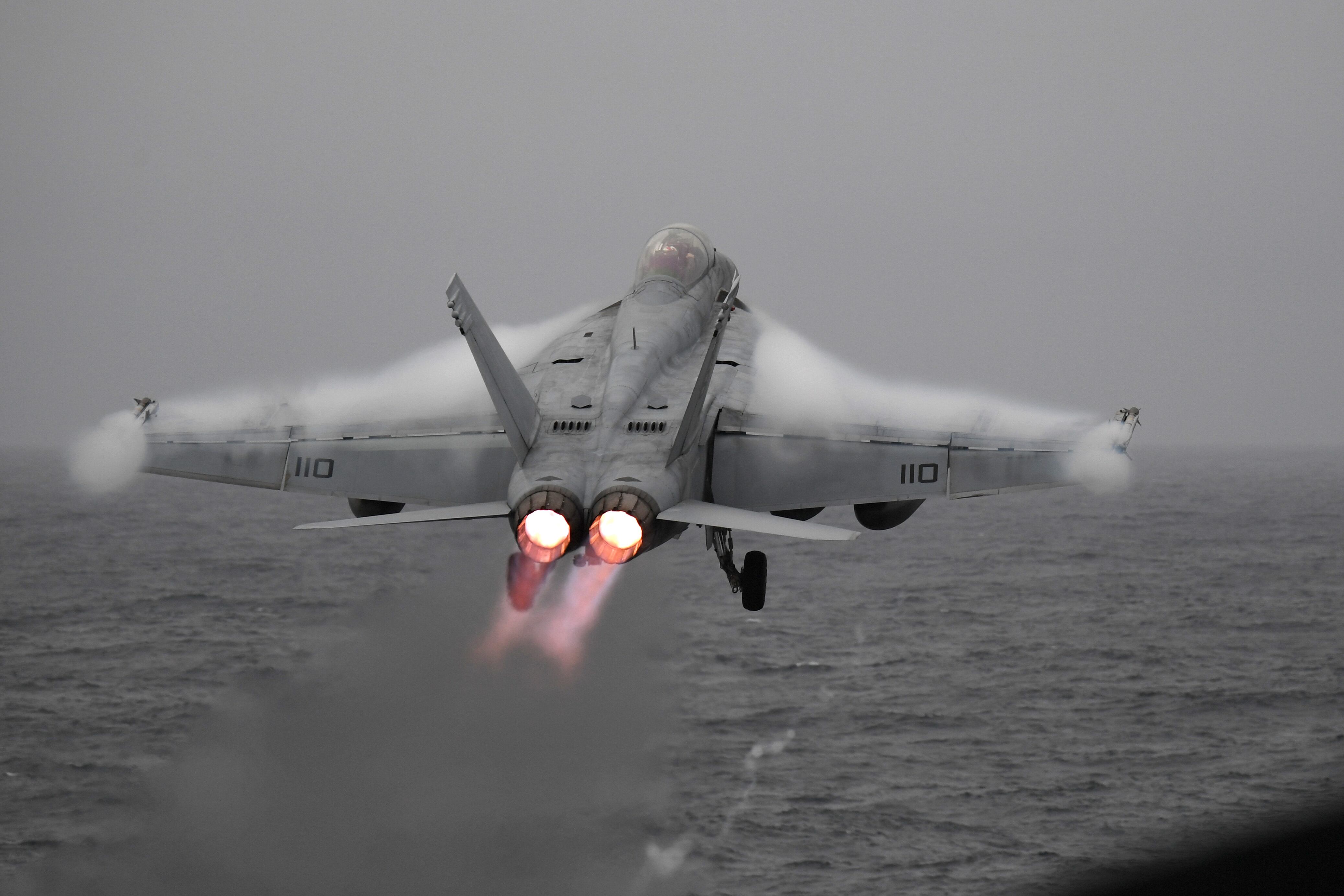The Harry S. Truman Carrier Strike Group’s landmark cruise is almost over.
The aircraft carrier and its escorts departed the Mediterranean Sea on Dec. 4, kept sailing west and exited the 6th Fleet’s area of responsibility a week later. They’re expected to arrive in Norfolk on Dec. 16.
It won’t be the first time the flattop has returned to Norfolk since initially deploying from her homeport on April 12.
It’s all part of a Navy effort to prove Secretary of Defense James Mattis’ Dynamic Force Employment plan. He wants all expeditionary units to shake up their deployment routines, making it more difficult for potential enemies to guess when they leave and where they might end up.
The Navy volunteered to pioneer the Mattis plan, which is why the Truman made a surprise return to Norfolk on July 21 with its guided-missile escorts — the cruiser Normandy and destroyers Arleigh Burke and Forrest Sherman.
Officials termed that pit stop a “working port visit” and cautioned sailors that they could return to sea soon.
The quartet of warships left Norfolk again on Aug. 28. They conducted a brief exercise with the carrier Abraham Lincoln and then kept going east across the Atlantic Ocean to return to the 6th Fleet in mid-September.
The strike group’s spell with 6th Fleet also didn’t follow what had become the model for carrier cruises over the past two decades.
The Truman crossed the Arctic Circle on Oct. 19, conducting maneuvers with NATO allies in the Norwegian Sea, the first American carrier to operate that far north since 1991.
RELATED

“The National Defense Strategy makes clear that we must be operationally unpredictable to our long-term strategic adversaries, while upholding our commitments to our allies and partners,” said Adm. James G. Foggo III, who commands the U.S. Naval Forces Europe-Africa.
“That’s what we’ve done with the Harry S. Truman Carrier Strike Group. The operations the strike group conducted across the region alongside our allies and partners...showcase our inherent flexibility, and prove that there are no international waters off limits to our forces, and nothing limiting their ability to support our allies, anywhere or at any time.”
Once back in Norfolk, the carrier is slated to enter a stand-down period spanning the holidays. After that, Truman will be marked as the East Coast sustainment carrier, ready to respond to national emergencies.
Mark D. Faram is a former reporter for Navy Times. He was a senior writer covering personnel, cultural and historical issues. A nine-year active duty Navy veteran, Faram served from 1978 to 1987 as a Navy Diver and photographer.





